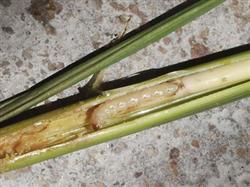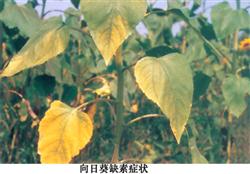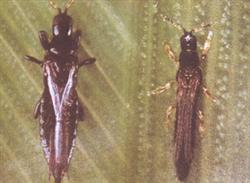Rice diseases and insect pests: how to treat rice heart-drilling insects?

How to treat rice heart-drilling worm? Please introduce the control methods in detail. You can refer to the following methods for control: first, update rice varieties: compress or eliminate a small number of varieties that are particularly susceptible to insects, so as to reduce the pressure and occurrence of chemical control. Second, flooding to kill pupae: because the first hatching of Chilo suppressalis harms the leaf sheath of rice, the late-maturing winter field and grass seed remain in the field, and most of the pupae can be drowned by flooding 3.5-6.5 cm during the pupation period. Or in the first and second generation larvae mature stage of dry field water, let the larvae drill into the root mark pupation, pupation period submerged in deep water for 3 days, most of the pupae can be drowned, and the insecticidal effect is more than 90%. Third, late sowing at the right time, cultivation and avoiding borer: popularizing the light cultivation technology of rice in an all-round way can appropriately postpone the sowing date of rice, make the seedling stage of rice prone to laying eggs avoid the peak spawning period of the first generation of borer, reduce the number of eggs in the seedling field, and reduce the number of occurrence of the first generation borer in the whole year, so as to achieve the purpose of cultivating and avoiding borer. Fourth, chemical control: ① adheres to the prevention and control strategy of "ruthless treatment for the first generation and universal treatment for the second generation". The first generation aims at lowering the base number, and the control effect is obvious in the seedling field. The second generation aims at controlling hazards, ensuring production and winning a bumper harvest. ② grasps the insect situation and ensures that the drug is applied during the peak period of egg hatching. ③ selects the right medicament to ensure the control effect. Medicament control should choose medicament according to different regions and generations according to local conditions, minimize the frequency and dosage of medication, rotate the use of drugs, slow down drug resistance, and choose low toxicity and biological pesticides. ④ is applied correctly to exert its efficacy. The application mode of controlling the second generation of Chilo suppressalis, pouring with flood and coarse spray is better than that of fine spray and mist, and chemical control should be used in the withered sheath period. Spray and control more than 50 eggs per mu in time during the peak egg hatching period, the withered heart and sheath can be used in the ant borer stage (egg hatching peak); the white panicle can be used in the early stage of rice break (about 10%), and when a large number of insects occur, it should be prevented for the second time in 5-7 days after medication. Applicable medicament: 50 ml of 5% Regent suspension per mu, or 48% of 50 ml of Lexben 50 ml per mu to control the first and second generation of Chilo suppressalis and Chilo suppressalis, with broad spectrum and persistence, and can also control gray planthopper and rice weevil; biological pesticide Sutrin is used before egg hatching and young age peak; 51% rice farmer 1 50 grams per mu, or 46% special killing borer 60 grams, spray with water 37.5 kg. Click to get more rice planting techniques click to get more food crop planting techniques
- Prev

Sunflower planting: how about sunflower deficiency?
How about sunflower deficiency? Please introduce in detail the following symptoms of sunflower deficiency: slow growth at nitrogen deficiency seedling stage, slender and thin plants, small and thin leaves, yellowish green or light green, nitrogen deficiency in the middle of growth, early yellowing of lower leaves, small disk, and poor growth of vegetative organs.
- Next

Rice diseases and insect pests: how to control common rice diseases and insect pests?
How to control common rice diseases and insect pests? Please introduce and guide how to control common rice diseases and insect pests: Rice thrips, leaf rollers (rice bracts), rice leaf borer, rice planthopper. Detailed control methods can be referred to the following methods: first, rice thrips rice thrips are very small, adults are dark brown, winged, crawling.
Related
- The first cup of black tea in spring, the flavor and history of tea gardens in Kenya, Africa
- The computer can not only choose potatoes, but also grow tea rice. AI will grow winter oolong tea champion.
- It is not only the inflated tea bitten by insects, but also engraved with the four seasons tea in Beipu.
- The Oriental Beauty Tea Festival in Zhuxian County takes the stage at the weekend to experience the plus-size feast of oil tea.
- & quot; Oriental Beauty Tea & Exploration of Emei in Hsinchu, the hometown of quot;
- The new variety of strawberry "Tainong 1" dessert is the first choice with mellow aroma. Crimson gorgeous
- History of Tea in Taiwan: from Wild Inner Mountain to Export Tea Garden
- Two types of Taiwan Oriental Beauty Black Tea won the British three-Star Award for Childhood Tea Xiang Zhang Jiaqi changed from pilot to champion tea maker.
- Banana species and varieties: the planting history of Taiwan Xianren banana and dwarf banana is long, is banana disease resistant?
- Coffee planting Technology: Qianjie Coffee from Seedling to harvesting

